#lucumí
Text
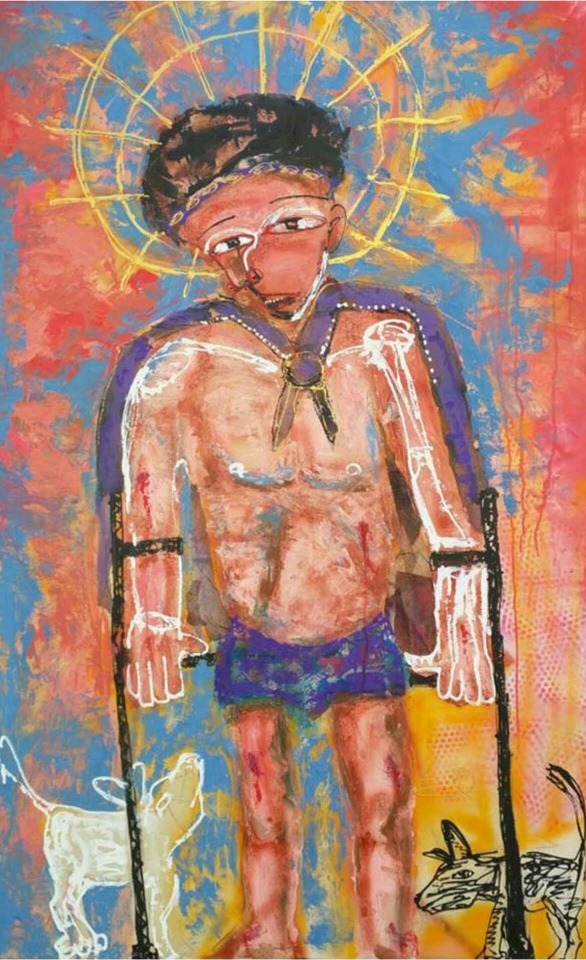
Dennys Dennys
« The Old San Lázaro »
2017
#dennys dennys#san lázaro#san lazaro#arte#art#cuba#arte latinoamericano#caribbean#latin american art#caribbean art#caribbean artist#antilles#caribeño#babalu aye#lucumí#babalú ayé#yoruba#santeria#santería#lucumi#catholicism#catolicismo
16 notes
·
View notes
Text




Above are photographs by Elliot and Erick Jiménez for the 2023 Florida Prize in Contemporary Art at the Orlando Museum of Art.
The twins' photographs explore art history references and religious iconography to create a body of work which beckons you in to see what emerges from their dark canvases.
The museum's information about the work-
Elliot & Erick Jiménez are the first collaborative artist team to be presented in the Florida Prize exhibition. They have the additional distinction of being identical twins. Growing up with shared interests in art and photography, each contributed individual strengths, creating their work through a process of planning, communication, and mutual respect. Their aesthetic approach is inspired by the canon of European art history and their Cuban heritage, while also being relevant to contemporary visual culture. The Jiménezes are first-generation Cuban Americans raised in Miami. Since an early age they have been involved in a religious practice native to Cuba called Lucumí and more popularly known as Santeria. A pantheistic religion, Lucumí arose by a process of syncretism. It combines the beliefs and practices of the Yoruba people, who once comprised most of the enslaved people of Cuba, and Roman Catholicism, the sanctioned religion of the island's Spanish Colonial rulers. In part to conceal the practice of Lucumí, Catholic rituals and sacraments were conflated with those of the Yoruba. Saints became an alternate manifestation of Yoruba deities known as orishas. As with seeking the blessings of saints, followers of Lucumí seek the good will of orishas so that they will benevolently offer guidance and protection in life.
In their current series of photographs, the Jiménezes have visualized the representation of deities within the syncretism of Lucumí and Catholic beliefs. Pictured are symbolic figures, their faces deeply shadowed or obscured, but identifiable through iconography much the same as the saints seen in old master paintings. This reference to the history of European painting is made explicit in works like The Grand Odalisque, which echoes Jean-Auguste-Dominique Ingres's painting of the same name. The Jiménez photograph depicts Oshun, the orisha of beauty, love, and fertility, reclining on a yellow drapery, her iconic color. Unlike Ingress overtly seductive odalisque, Oshun is a mere silhouette in black, an aloof deity covered with sparkling gems like stars in a night sky.
In The Apotheosis of Lucumí, François Lemoyne's masterpiece The Apotheosis of Hercules is the stirring backdrop for a beautiful allegorical figure representing the Lucumí religion. Surrounding her from Lemoyne's painting are the gods and goddesses of the ancient classical world, another pantheistic religion which in turn was to be conflated with later Christian practices, saints, and celebrations.
Other deities portrayed in these works include Ibeji, the orisha of twins. The Jiménezes posed for this photograph costumed in ruff collars that recall Cuba's colonial past. El Padre, El Hijo, Y El Espíritu Santo presents Obatala, creator of human bodies, shown in three different positions representing the Trinity. Yemaya, mother of all orishas, is the subject of Blue Chapel, her associated color. In this work's four panels she is a dark figure seen with the pale image of God the Father. They sensually express the evolving relationship between the two deities and between Lucumí and Christianity. The panels represent, in sequence, rejection, acceptance, advocacy, and interdependence. Blue Chapel exquisitely conveys the mystery, allure, and power these intertwined religions have for their followers.
#elliot and erick jiménez#photography#2023 florida prize in contemporary art#orlando museum of art#florida artist#florida art show#art show#art#religious iconography#ingres#lucumí#odalisque
0 notes
Text
Regla de Ocha
_DSF5220
I have documented many remnants of Santeria, Regla de Ocha, or Regla Lucumí rituals in Trinity Church Cemetery. I thought it had died down until I found this severed rooster head. I always feel bad for these animals.
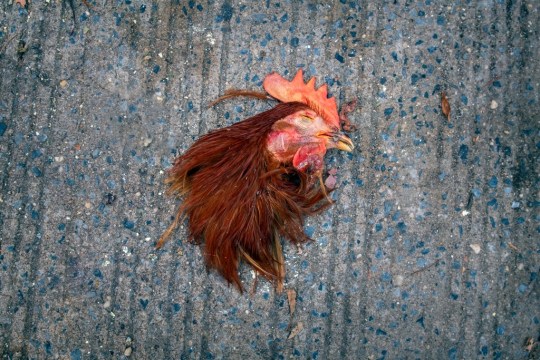
View On WordPress
#Life_On_The_Street#FujiFilm X100T#Manhattan#New York City#raw streets#Regla de Ocha#Regla Lucumí#rooster#Santeria#street#street photography#urban life#_DSF5220
4 notes
·
View notes
Text
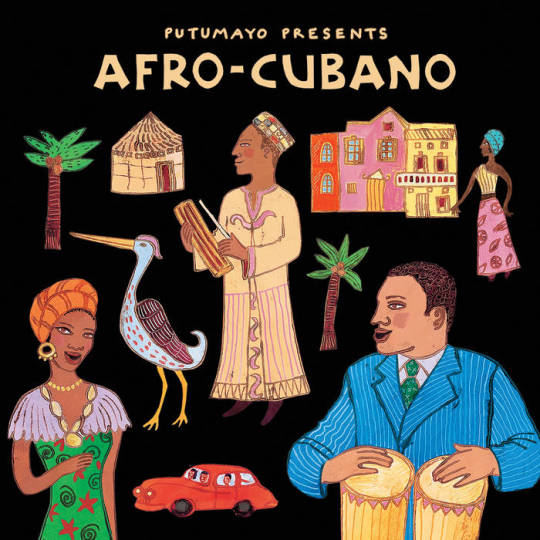
Music of African heritage in Cuba derives from the musical traditions of the many ethnic groups from different parts of West and Central Africa that were brought to Cuba as slaves between the 16th and 19th centuries. Members of some of these groups formed their own ethnic associations or cabildos, in which cultural traditions were conserved, including musical ones. Music of African heritage, along with considerable Iberian (Spanish) musical elements, forms the fulcrum of Cuban music.
Much of this music is associated with traditional African religion – Lucumi, Palo, and others – and preserves the languages formerly used in the African homelands. The music is passed on by oral tradition and is often performed in private gatherings difficult for outsiders to access. Lacking melodic instruments, the music instead features polyrhythmic percussion, voice (call-and-response), and dance. As with other musically renowned New World nations such as the United States, Brazil and Jamaica, Cuban music represents a profound African musical heritage.

Clearly, the origin of African groups in Cuba is due to the island's long history of slavery. Compared to the USA, slavery started in Cuba much earlier and continued for decades afterwards. Cuba was the last country in the Americas to abolish the importation of slaves, and the second last to free the slaves. In 1807 the British Parliament outlawed slavery, and from then on the British Navy acted to intercept Portuguese and Spanish slave ships. By 1860 the trade with Cuba was almost extinguished; the last slave ship to Cuba was in 1873. The abolition of slavery was announced by the Spanish Crown in 1880, and put into effect in 1886. Two years later, Brazil abolished slavery.
Although the exact number of slaves from each African culture will never be known, most came from one of these groups, which are listed in rough order of their cultural impact in Cuba:
The Congolese from the Congo Basin and SW Africa. Many ethnic groups were involved, all called Congos in Cuba. Their religion is called Palo. Probably the most numerous group, with a huge influence on Cuban music.
The Oyó or Yoruba from modern Nigeria, known in Cuba as Lucumí. Their religion is known as Regla de Ocha (roughly, 'the way of the spirits') and its syncretic version is known as Santería. Culturally of great significance.
The Kalabars from the Southeastern part of Nigeria and also in some part of Cameroon, whom were taken from the Bight of Biafra. These sub Igbo and Ijaw groups are known in Cuba as Carabali,and their religious organization as Abakuá. The street name for them in Cuba was Ñáñigos.
The Dahomey, from Benin. They were the Fon, known as Arará in Cuba. The Dahomeys were a powerful group who practised human sacrifice and slavery long before Europeans arrived, and allegedly even more so during the Atlantic slave trade.
Haiti immigrants to Cuba arrived at various times up to the present day. Leaving aside the French, who also came, the Africans from Haiti were a mixture of groups who usually spoke creolized French: and religion was known as vodú.
From part of modern Liberia and Côte d'Ivoire came the Gangá.
Senegambian people (Senegal, the Gambia), but including many brought from Sudan by the Arab slavers, were known by a catch-all word: Mandinga. The famous musical phrase Kikiribu Mandinga! refers to them.
Subsequent organization
The roots of most Afro-Cuban musical forms lie in the cabildos, self-organized social clubs for the African slaves, and separate cabildos for separate cultures. The cabildos were formed mainly from four groups: the Yoruba (the Lucumi in Cuba); the Congolese (Palo in Cuba); Dahomey (the Fon or Arará). Other cultures were undoubtedly present, more even than listed above, but in smaller numbers, and they did not leave such a distinctive presence.
Cabildos preserved African cultural traditions, even after the abolition of slavery in 1886. At the same time, African religions were transmitted from generation to generation throughout Cuba, Haiti, other islands and Brazil. These religions, which had a similar but not identical structure, were known as Lucumi or Regla de Ocha if they derived from the Yoruba, Palo from Central Africa, Vodú from Haiti, and so on. The term Santería was first introduced to account for the way African spirits were joined to Catholic saints, especially by people who were both baptized and initiated, and so were genuine members of both groups. Outsiders picked up the word and have tended to use it somewhat indiscriminately. It has become a kind of catch-all word, rather like salsa in music.
The ñáñigos in Cuba or Carabali in their secret Abakuá societies, were one of the most terrifying groups; even other blacks were afraid of them:
Girl, don't tell me about the ñáñigos! They were bad. The carabali was evil down to his guts. And the ñáñigos from back in the day when I was a chick, weren't like the ones today... they kept their secret, like in Africa.
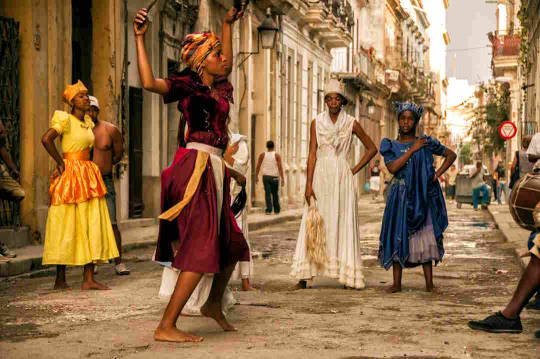
African sacred music in Cuba
All these African cultures had musical traditions, which survive erratically to the present day, not always in detail, but in the general style. The best preserved are the African polytheistic religions, where, in Cuba at least, the instruments, the language, the chants, the dances and their interpretations are quite well preserved. In few or no other American countries are the religious ceremonies conducted in the old language(s) of Africa, as they are at least in Lucumí ceremonies, though of course, back in Africa the language has moved on. What unifies all genuine forms of African music is the unity of polyrhythmic percussion, voice (call-and-response) and dance in well-defined social settings, and the absence of melodic instruments of an Arabic or European kind.
Not until after the Second World War do we find detailed printed descriptions or recordings of African sacred music in Cuba. Inside the cults, music, song, dance and ceremony were (and still are) learnt by heart by means of demonstration, including such ceremonial procedures conducted in an African language. The experiences were private to the initiated, until the work of the ethnologist Fernando Ortíz, who devoted a large part of his life to investigating the influence of African culture in Cuba. The first detailed transcription of percussion, song and chants are to be found in his great works.
There are now many recordings offering a selection of pieces in praise of, or prayers to, the orishas. Much of the ceremonial procedures are still hidden from the eyes of outsiders, though some descriptions in words exist.
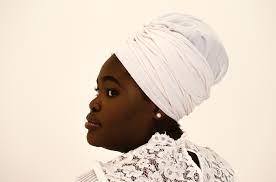
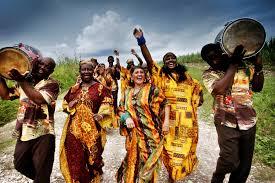
Yoruba and Congolese rituals
Main articles: Yoruba people, Lucumi religion, Kongo people, Palo (religion), and Batá
Religious traditions of African origin have survived in Cuba, and are the basis of ritual music, song and dance quite distinct from the secular music and dance. The religion of Yoruban origin is known as Lucumí or Regla de Ocha; the religion of Congolese origin is known as Palo, as in palos del monte.[11] There are also, in the Oriente region, forms of Haitian ritual together with its own instruments and music.
In Lucumi ceremonies, consecrated batá drums are played at ceremonies, and gourd ensembles called abwe. In the 1950s, a collection of Havana-area batá drummers called Santero helped bring Lucumí styles into mainstream Cuban music, while artists like Mezcla, with the lucumí singer Lázaro Ros, melded the style with other forms, including zouk.
The Congo cabildo uses yuka drums, as well as gallos (a form of song contest), makuta and mani dances. The latter is related to the Brazilian martial dance capoeira
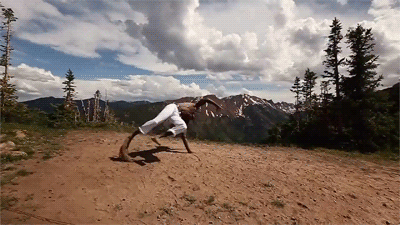
#african#afrakan#kemetic dreams#africans#brownskin#brown skin#afrakans#african culture#fitness#afrakan spirituality#afro cuban music#afro cuban#igbo#yoruba#congo#african music
122 notes
·
View notes
Text
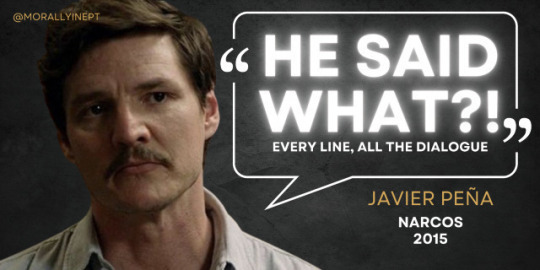
A full transcribe of JAVIER PEÑA'S dialogue/lines from the TV show NARCOS.
S2/E8 - EXIT EL PATRÓN
Includes full dialogue, and dialogue from any deleted/additional scenes available.
I've created this as a point of reference when writing for Pedro's characters, and I hope you find it useful. Even if you just want to read the dialogue. 🖤
FULL MASTERLIST OF PEDRO CHARACTERS DIALOGUE


☝🏻Dialogue has been fully transcribed by myself using reference to original scripts (if available), audio subtitles and using my own two ears. Therefore, mistakes can be made, however I have tried to be as fully accurate as I can. If you spot an obvious mistake, please kindly let me know. Where audio is not clear, I have marked with *inaudible* Scenes are separated for ease of reference.

FULL SCRIPT DIALOGUE:
Join the DEA, see the world, right?
Listen… I need you to prepare yourself for some blowback. It goes high up. And these people aren’t gonna like it when I try to get myself out of it. If they come after you about what I’ve been doing, you protect yourself first. You didn’t know anything. Understand?
I don’t fucking know.
__________________
No.
__________________
(In Spanish) That’s right. But you have to talk to get it.
(In Spanish) Blackie… Blackie, Blackie, Blackie. What name did your mother give you?
(In Spanish) Lucumí? From the pacific. Lucumí, they found explosive residue on your hands. On your jacket, everywhere. They’re going to blame you for that bomb, Lucumí.
(In Spanish) We know that. We know it wasn’t your idea. We know you’re not the boss. Don’t let them blame you for this. Don’t let them see you as the one who killed all those innocent children. Help us and we’ll help you. Give us Pablo.
(In Spanish) Then give us something. You have to give us something or they’ll hang you.
__________________
He will be because we’ll be calling him with Blackie’s phone. He picks up, we get a signal.
Just us.
__________________
(In Spanish) I need to know you didn’t make the call.
(In Spanish) I know. But not with them.
__________________
It was him.
(In Spanish) Quica. Hello.
(In Spanish) Hello, Quica. How’s it going, my friend?
(In Spanish) Calm down, Quica. Don’t be nervous. What’s up, Quica?
__________________
(In Spanish) Quica. What’s up, Quica? Quica, Quica, Quica. What time is it, Quica? What are you up to, Quica?
__________________
Motherfucker.
Here we go.
Stop!
__________________
(In Spanish) Where is the staging point?
(In Spanish) Then give us Pablo, asshole.
He says he wants a new life in the US of A.
(In Spanish) We don’t have time for bullshit. Blackie already rolled on all of you. If you don't give us something fast, of substance, we’ll buy you that ticket to the United States… but extradited.
(In Spanish) Fine, then a jail cell here. With a sign that says “snitch” around your neck.
__________________
(In Spanish) Now give us the staging point.
__________________
There you are, motherfucker.
It’s after nine. He’s not showing up. He’s fucking onto us.
Oh, fuck this!
__________________

FULL MASTERLIST OF PEDRO CHARACTERS DIALOGUE
#pedro pascal#javier peña#javier pena#pedro pascal characters#javier pena narcos#javier pena dialogue
8 notes
·
View notes
Text
The Seven African Powers & Who They Really Are.

The Seven African Powers are a common spiritual force that people petition within Santeria but there is a common misconception that's been going around about who they are and how they function. If you visit any botanica (spiritual shop) you’ll find candles that look like the image above claiming to be 7 African Powers candle. Along with other spiritual supplies that claim the same thing.
Who are these powers is the question:
The image above shows a collection of seven different saints: Our Lady of Mercy, The Virgin of Regla, Our Lady of Charity of Cobre, Saint Barbara, Saint Joseph of Arimathea, Saint John the Baptist, and Jesus on the Cross in the center. Under each saint image is the name of one of the Orishas. The name Olofi is under the image of Jesus. The images of saint are linked together with a metal chain along with 7 of Ogun’s tools hanging from the bottom.
Because of the image to the right, most people mistakenly think that the Seven African Powers are the orishas: Elegua, Ogun, Orula, Chango, Oshun, Yemaya and Obatala. But how did this come about?
Who really are the Seven African Powers if they aren’t the Orishas? Can anyone work with the Seven African Powers or is it limited to initiates of Santeria practice only?
The Syncretization Of The Orishas:
With the individual Catholic saints isn’t that unusual but the grouping of these particular Orishas together is what makes it unique. Well Santerismo developed out of Puerto Rican Espiritismo (Spiritualism) blended with Orisha worship outside of a Lucumí practice. In Santerismo it is common for spiritualist mediums to become possessed by Catholic saints referring to themselves by the names of the Orishas. Santerismo took its roots in the Puerto Rican community in New York City in the 1950’s.
Santerismo is NOT Santeria:(Lucumí/Lukumi). Santerismo is a spiritualist tradition open to revelation while Santeria is an initiatory religion.
But the spiritualists in Santerismo didn’t understand the difference and they assumed they were the Orishas. The images of seven Catholic saints put together in a manner dedicated to the Seven African Powers but that didn’t come about until the 1970’s and 80’s and the Espiritismo tradition’s influences.
Who the Seven African Powers Really Are:
They are Spirit Guides they are spirits of the dead from the seven different African tribes that were brought to Cuba.
When a person speaks of the Seven African Powers they refer to a group of 7 different spirits, one from each of the following tribes: Yoruba, Congo, Takua, Kissi, Calabari, Arará, and Mandika. A person who has a connection with the Seven African Powers will have one spirit guide from each of these tribes unique to him. The importance of the drum as a tool to call down the Orishas.
The Seven African Powers are called upon for help with spiritual evolution, overcoming obstacles, and personal power. Anyone can petition the Seven African Powers as they are spirit guides and everyone, initiated or not, have access to spirits of the dead for their guidance. (They can be petitioned by lighting vigil candles that are of 7 colors, or using 7 different candles of different colors.) It is also traditional to tie strips of cloth or handkerchiefs of seven different colors in a bundle. By whirling this bundle of loose multicolored cloth in the air over your head, as you call the Seven African Powers and petition them for help. Can can also work with your own spirit guides as well.
32 notes
·
View notes
Text
Un poquito de historia en la religion...
Babalú Ayé representa las afecciones de la piel, las enfermedades contagiosas, especialmente las venéreas y las epidemias en el ser humano. Medio hermano de Changó, cuando los adivinos se reunieron para la distribución de los reinos le fue entregado el Reino de Dajome.
Arará Dajome de nacimiento según unos; aunque de tierra Lucumí fue a tierra de Dajome según otros.
Es el santo más venerado de tierra Arará. Tiene el aspecto de un invalido, minado por un mal deformante, de piernas retorcidas y espinazo doblado. En Candomblé y Umbanda se lo representa cubierto de unos vestidos de paja. Deidad de la viruela, la lepra y, en general, de las afecciones de la piel.
Orisha mayor y santo muy venerado.
En realidad Babalú Ayé es un título que significa "padre del mundo" que se le daba a Chopono o Chakpata, el terrible Orisha de la viruela, cuyo nombre no podía pronunciarse.
A este Santo le gusta trabajar con muertos. Su color es el morado obispo y su día es el viernes, aunque para otros es el miércoles. Su número es el 17 y habla en el 4, el 11 y el 13 del Diloggún (Irosun, Ojuani y Metanlá).
COLLARES.. Cuentas negras, matipó de Oyá, Matipó de San Lázaro (blanco con rayas azules) cuentas rojas. Combinadas según el camino del Santo.

4 notes
·
View notes
Text
Santeria differs from Voodoo in one major way:
Instead of French colonialism and the sugar industry it's Spanish colonialism and....the sugar industry. The French were the most blatant money-grubbing bastards in the colonial world of the Americas, which when their competition was the proto-US and the Spanish Empire and the Portuguese Empire (and all the little attempts the bigger ones ground up and got rid of) is a hard margin to hit but they did. The Spanish offered a caste system that had a narrowly wider region to integrate.....and in the end the main gap is instead of calling the Orishas Loa they're called Santos or Saints and there's a more directly Catholic and less overtly African aspect to Santeria.
#lightdancer comments on history#black history month#african-american history#cuban history#santeria
5 notes
·
View notes
Text
Från trakten
Från trakten (Serie 2023)
#FatimaJelassi #HampusHedstrom #JohanOstling #HelenaLindegren #CharleenElea #AlbinOlsson
Mehr auf:
Serie Jahr: 2023- (Mai)
Genre: Comedy
Hauptrollen: Fatima Jelassi, Hampus Hedström, Johan Östling, Helena Lindegren, Charleen Elea, Albin Olsson, Yasmine Seifi, Henriette Valsö, Zinat Pirzadeh, Tobias Skogman, Lucas Grimstedt, Fernando Lucumí Carabalí, Maja Lagerkvist …
Serienbeschreibung: Die Teenager-Waise Zeina muss ihre Nachbarschaft in der Vorstadt verlassen und in ein Pflegeheim auf dem…

View On WordPress
0 notes
Text
Además de los muertos, heridos y cientos de casas destruidas, el sismo dejó a una población a la intemperie en una noche invernal con temperaturas bajo cero que complicó la situación de los sobrevivientes. Muchas personas no regresaron a su casa por temor, luego de las nueve réplicas que siguieron al movimiento de tierra que cobró la vida de al menos 126 personas, mientras el Gobierno de Xi Jinping pidió celeridad a las autoridades locales.
:Juan Pablo Lucumí
Un terremoto de magnitud 6,2 sorprendió a los ciudadanos del distrito de Jishisian en la medianoche del lunes 18 de noviembre. Las provincias de Gansu y Qinghai, en la región montañosa del noroeste de China, reportaron daños masivos, más de 730 heridos y problemas de electricidad y suministro de agua.
Los equipos de rescate siguen este martes las operaciones en medio de edificios derrumbados y deslizamientos de tierra, una tarea que se complica cada vez más con las bajas temperaturas que han alcanzado los -15° Celsius.
Además de los heridos y los 126 fallecidos (la mayoría en Gansu y el resto en Qinghai) los medios locales han informado de 20 personas desaparecidas, quienes están siendo buscadas con drones, excavadoras y topadoras, en medio de la complicada región montañosa.
El terremoto se produjo a una profundidad relativamente baja de 10 kilómetros, en el condado de Jishishan de Gansu, a unos cinco kilómetros de la frontera provincial con Qinghai, según la información que entregó el Centro de Redes Sísmicas de China, mientras el Servicio Geológico de Estados Unidos midió la magnitud en 5,9.
Mapa de las provincias donde ocurrió el terremoto de la media noche del lunes 18 de diciembre, en China. © France 24 en Español
Tan solo a las 10 de la mañana, hora local, ya se habían contabilizado nueve réplicas de magnitud 3,0 o superior, unas 10 horas después del terremoto inicial, la mayor de ellas con una magnitud de 4,1, dijeron las autoridades.
Los esfuerzos de rescate
"Las 72 horas posteriores a un terremoto, cuando es más probable rescatar a los supervivientes, se podrían acortar por el mal tiempo, con lo que las víctimas atrapadas se enfrentan a un mayor riesgo", indicó la agencia estatal Xinhua.
Un grupo de médicos y más de 2.000 bomberos fueron enviados por el Ejecutivo chino y el Ministerio de Gestión de Emergencias, luego de que hubieran decretado una respuesta nivel II al siniestro.
Las fuerzas armadas también se unieron a las operaciones de rescate y asistencia a las que Beijing destinó 28 millones de dólares.
Se instalan tiendas de campaña para los residentes tras un terremoto en la aldea de Dahejia, en el condado de Jishishan, en la provincia noroccidental china de Gansu, el martes 19 de diciembre de 2023. Un terremoto durante la noche mató a varias personas en una región fría y montañosa en el noroeste de China, informaron el martes los medios estatales del país. AP
Con el grupo, llegaron 2.600 tiendas de campaña, 10.400 camas plegables, 10.400 edredones y 1.000 juegos de estufas, además de los 111.500 artículos de socorro que se habían asignado, hasta la mañana de este martes, para las personas afectadas de la zona.
“El Consejo de Estado ha enviado un grupo de trabajo a las áreas afectadas para ayudar a orientar la labor de ayuda. Las provincias de Gansu y Qinghai han organizado el apoyo de socorro con la asignación inmediata de los suministros de alivio como campamentos y camas plegables”, publicó la agencia estatal de Xinhua en español.
Una fuerza de tarea a nivel estatal fue enviada con rapidez a la región azotada por un #sismo en la provincia de #Gansu, en el noroeste de #China para apoyar y supervisar el trabajo de control epidemiológico y de desinfección, anunció la Administración Nacional de Control y… pic.twitter.com/uH5AlWncIX
— China Xinhua Español (@XHespanol) December 19, 2023
Edificios con escasa resistencia sísmica
Aunque los terremotos son algo comunes en la zona montañosa del oeste de China que se eleva hasta formar
el borde oriental de la meseta tibetana, cerca del lugar donde friccionan las placas tectónicas de Asia y la India, en el Himalaya, lo cierto es que es una región con poca solidez en la construcción de sus edificaciones para afrontar sismos.
El diario local ‘Global Times’ aseguró que el número de víctimas, en parte, fue por la escasa resistencia de los edificios de esta región, un escenario que se complicó por la hora en la que ocurrió el movimiento de tierra, que dejó sin capacidad de reacción a muchas personas.
Algunos residentes aseguraron al medio local ‘The Paper’ que muchas personas dormían cuando se produjo el terremoto, al filo de la medianoche, y que no tuvieron tiempo de refugiarse.
Li Haibing, experto de la Academia China de Ciencias Geológicas, dijo que el número relativamente alto de víctimas en el último terremoto se debió en parte a que fue poco profundo. "Por lo tanto, ha causado mayor temblor y destrucción, a pesar de que la magnitud no fue grande", aseguró.
En esta foto aérea publicada por la agencia de noticias Xinhua, los rescatistas buscan en un edificio derrumbado en la aldea de Caotan de Minhe Hui y el condado autónomo de Tu en la ciudad de Haidong, provincia noroccidental china de Qinghai, el martes 19 de diciembre de 2023. Un terremoto durante la noche mató a varias personas en una región fría y montañosa en el noroeste de China, informaron el martes los medios estatales del país. © Zhang Hongxiang/Xinhua vía AP
En septiembre de 2022, 93 personas murieron en un terremoto de magnitud 6,8 que sacudió la provincia suroccidental china de Sichuan, provocando deslizamientos de tierra y sacudiendo edificios en la capital provincial de Chengdu, donde 21 millones de residentes estaban bajo confinamiento por Covid-19.
Sin embargo, los episodios más mortíferos ocurrieron hace nueve y 15 años, cuando en agosto de 2014 el terremoto en la provincia occidental de Yunnan dejó 617 fallecidos y antes, en 2008 en la provincia de Sichuan, murieron 70.000 personas.
Para recibir en tu celular esta y otras informaciones, únete a nuestras redes sociales, síguenos en Instagram, Twitter y Facebook como @DiarioElPepazo
El Pepazo/France24/Con AP y EFE
0 notes
Text

El respeto dentro de la Regla de Osha, también conocida como la cultura afrocubana Lucumí, desempeña un papel fundamental en la construcción de relaciones armoniosas entre los Olorisas. Esta tradición religiosa, arraigada en la cultura yoruba, enfatiza la importancia de honrar a los orishas, a los ancestros y a los demás practicantes. El respeto mutuo es la base de una comunidad Osha sólida y un componente esencial para el crecimiento espiritual.
En la Regla de Osha, el respeto se manifiesta a través de varios principios y prácticas. Uno de los aspectos clave es reconocer el rango y la experiencia de los Olorisas más antiguos. Los Olorisas más jóvenes deben mostrar deferencia hacia aquellos con más conocimiento y experiencia, aprendiendo de sus enseñanzas y consejos. La tradición también enfatiza la humildad, ya que todos los practicantes, sin importar su nivel de conocimiento, están en constante aprendizaje.
La colaboración desinteresada es otro pilar fundamental en esta religión. Los Olorisas deben trabajar juntos para el beneficio de la comunidad, sin esperar recompensas personales. Esto se refleja en la realización de ceremonias colectivas, la asistencia a iniciaciones y la ayuda mutua en momentos de necesidad. La idea central es que al colaborar de manera desinteresada, se fortalece el tejido espiritual de la comunidad y se crea un ambiente de confianza y apoyo.
Para mantener relaciones basadas en el respeto mutuo y la colaboración desinteresada en la Regla de Osha, es esencial practicar la comunicación abierta y la escucha atenta. Las diferencias de opinión y las disputas pueden surgir en cualquier comunidad, pero abordar estos problemas con respeto y empatía puede ayudar a resolver conflictos de manera constructiva. Además, es importante recordar que el respeto no se limita solo a los Olorisas, sino que se extiende a todos los seres humanos y al entorno natural.
En resumen, la Regla de Osha enfatiza la importancia del respeto y la colaboración desinteresada entre los Olorisas para mantener una comunidad espiritual fuerte y armoniosa. A través de la humildad, la deferencia hacia los mayores y la práctica de valores fundamentales, los practicantes pueden construir relaciones significativas y enriquecedoras en su camino espiritual.
© Robert Obà Ení Orìaté
1 note
·
View note
Text
Serie A, le formazioni ufficiali di Cremonese-Bologna: c'è Cambiaso dall'inizio
Sono state ufficializzate le formazioni della gara tra Cremonese e Bologna, anticipo del sabato di Serie A con calcio d’inizio alle ore 15. In campo anche il bianconero Cambiaso.
CREMONESE (4-3-1-2): Carnesecchi; Sernicola, Chiriches, Vasquez, Valeri; Meité, Castagnetti, Pickel; Galdames; Okereke, Tsadjout.
Allenatore: Ballardini.
BOLOGNA (4-3-3): Skorupski; Posch, Bonifazi, Lucumí, Cambiaso;…
View On WordPress
0 notes
Photo
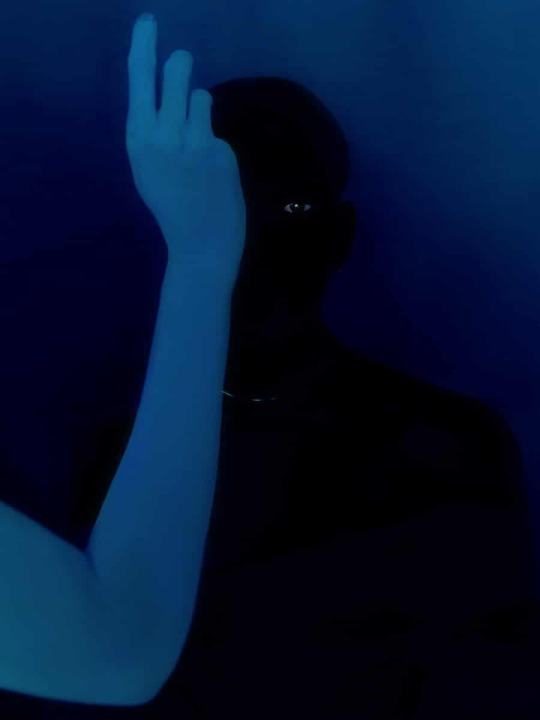

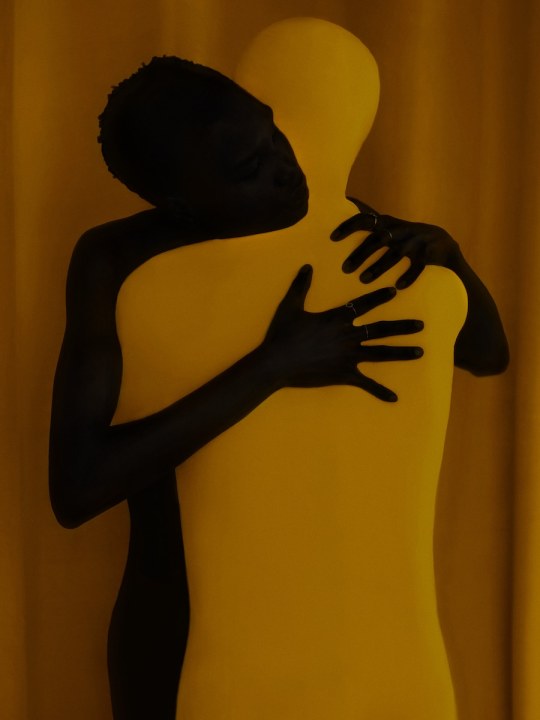
[TR] İkizler Elliot ve Erick Jiménez, Entre dos mundos'u kökenlerinin kutsal hikayelerini araştırarak derlediler. Ortaya çıkan figürler geçmişin masallarına ait olduğu, mistik bir havası olan bir dizin. - 20. yüzyılın sonunda doğan, Lucumí olarak da adlandırılan Santería, Küba'daki Afrika diasporası tarafından yaratılan bir dindir. Orishaların (Batı Afrika tanrıları) ve Katolik azizlerin figürlerini birleştiren bir senkretizm. İnançlar ve gelenekler arasındaki bu geçişin, siyah nüfusun dinlerini gizlice uygulama ihtiyacından kaynaklanmış olabileceği söyleniyor. Hıristiyan figürlerinin şeklini alan taptığı ruhlar böylece fark edilmeden geçmiştir. Doğal ve renkli soyut unsurlardan, bu tanrılar evrildi ve insan şeklini aldı. Küba ve Amerika kökenli fotoğrafçı kardeşler Elliot ve Erick Jiménez, bu maneviyatla, karşıt köklerden gelen çok sayıda yüzü olan bu dinle büyüdüler. Şimdi birlikte New York ve Miami arasında birçok etkiyi aşan rafine bir estetiğe sahip çalışmalar gerçekleştiriyorlar.
[ENG] Twins Elliot and Erick Jiménez compiled Entre dos mundos by researching the sacred stories of its origins. The resulting figures belong to the tales of the past, a series with a mystical atmosphere. - Born at the end of the 20th century, Death Santería, also known as Lucumí, is a religion created by the African diaspora in Cuba. A syncretism combining figures of orishas (West African deities) and Catholic saints. It is said that this shift between beliefs and traditions may have resulted from the need to practice the black mass religions in secret. The souls worshipped by Christian figures have thus undergone differentiation. These gods evolved and took human form from natural and colourful abstract elements. Cuban and American brothers Elliot and Erick Jiménez grew up with this spirituality, this multifaceted religion from opposing roots. Now they perform together between New York and Miami with a refined aesthetic that transcends many influences.
#Elliot and Erick Jiménez#photography#photographer#contemporary#conceptual#creative#contemporaryphotography
0 notes
Text

The Yoruba culture in Cuba
The yorubá or lucumí religion which is also known as Santeria or Regla de Osha is the most expanded religion of African origin in Cuba.
Due to the abrupt change of environment from Africa to Cuba in the middle of horrific and humiliating conditions imposed by the slavery system the rich Yoruba civilization lost many of its values. However, thanks to the wonderful regular strategies to safeguard the most prized values they finally got to preserve their language, habits, music, oral literature, life’s morals and religion. This battle regarded as cultural cimarronaje (fugitive slave culture), religion brought about a tough cultural strength.
Several experts have considered the Santeria or Regla de Osha as a syncretic religion. Its old defenders were obliged to hide their religious beliefs during the slavery and the pseudo republic times. Those Yoruba men and women and their descendants disguised their deities under the aspect of catholic saints with similar characteristics to those of the orishas or Yoruba gods and they really were worshiping their African gods.
This religion as well as others from Africa was bothered by the authorities. Their ceremonies and celebrations were held in the mountains and some time the police seized the drums and other liturgical objects.
Many people thought that with the Cuban socialist government and the establishment of atheistic education based on the Marxist - Leninist philosophy that religion would collapse. Nevertheless, and due to the force and perseverance of the defense of those followers of this religion, its practice in Cuba is a real and regular fact and it is evident in the streets of the island where it was very common to see the initiates with their chains and white clothes.
Today, the Santeria or Regla de Osha has become a social and religious cultural complex whose African roots are unquestionable but at the same time they have been cross-cultured and they is already Cuban.

#african#cuba#cuban#orisha#santeria#west african#afrakan#kemetic dreams#brownskin#afrakans#brown skin#africans#african culture#afrakan spirituality
213 notes
·
View notes
Text
Don't always jump to canceling.
Hey witches,
I want to talk about purposeful malicious intent.
There is so much emphasis right now on cancel culture, and there are better options than this. Sometimes, people deserve to be canceled because of saying or doing something with evil intent (like JKR). This is only sometimes what happens.
Sometimes people genuinely do not know what they are doing is wrong, and I don’t think they can be held responsible if they do not do it will be evil feelings behind it.
An example of unnecessarily canceling is the video YES by Fat Joe, Cardi B & Anuel AA feat. Dre – YES. The video includes a moment where a group of women takes part in the Lucumí religion that is paired with the song’s sample, “Aguanile” by the late salsa legend Héctor Lavoe. Although this was a concise part of the song and video, many criticized it for being appropriate.
Fat Joe explained how that part of the song was an essential blessing to the intro and Lavoe, who also practiced Santería, and he did not intend to offend anyone. That is just something that happens in creative art; sampling can combine traditional aspects (including religion) and modern aspects (including rap). He did not intend to be disrespectful.
It is the idea that you shouldn’t be punished unless you know you are doing wrong. Not everyone should be canceled for one mistake.
Tata, for now, witches.
0 notes
Text
Different Styles Of Voodoo


When I hear that a country or city don't practice real Vaudou aka voodoo it bothers me when that person don't really know what voodoo, Vodou, Vodun etc is. Some think that it started in Haiti or that it isn't real if your not initiated in Haiti. So I wanted to make this quick post to show a few of the different styles of voodoo there are. Do the proper research and choose which practice calls to you.

First up is African Vodun is an is the birth place of vodun a ancient religion practiced by some 30 million people in the West African nations of Benin, Togo and Ghana. With its countless deities, animal sacrifice and spirit possession, voodoo — as it's known to the rest of the world — is one of the most misunderstood religions on the globe.

Second Haitian Vodou is an African diasporic religion that developed in Haiti. It arose through a process of syncretism between several traditional religions of West and Central Africa and Roman Catholicism. Vodou revolves around spirits known as lwa. Typically deriving their names and attributes from traditional West and Central African divinities, they are equated with Roman Catholic saints and the central ritual involves practitioners drumming, singing, and dancing to encourage a lwa to possess one of their members and thus communicate with them.
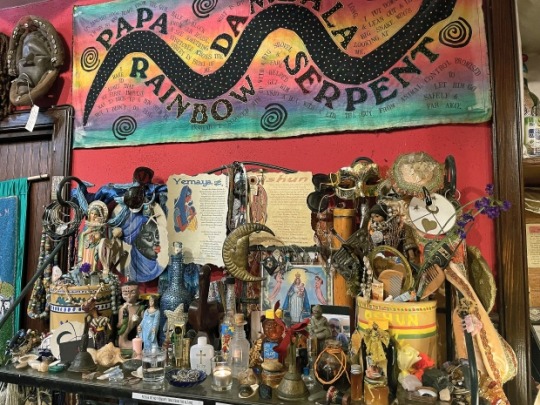
Third. Louisiana Voodoo, also known as New Orleans Voodoo, is an African diasporic religion which originated in Louisiana, now in the southern United States. It arose through a process of syncretism between the traditional religions of West Africa, Haitian Vodou and some christianity.
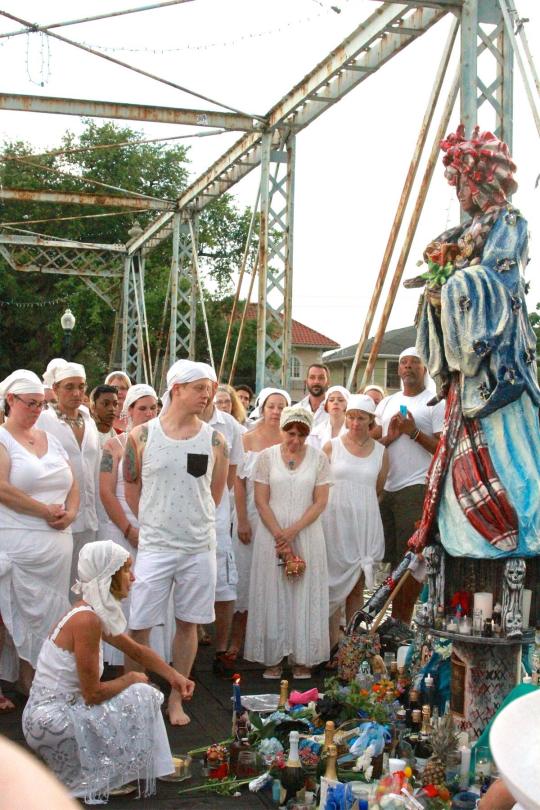

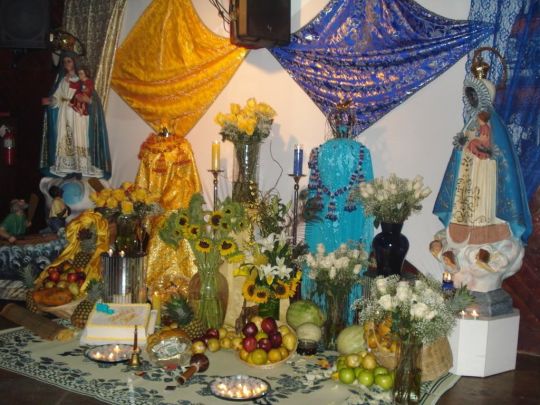
Forth Santería, also known as Regla de Ocha, Regla Lucumí, or Lucumí, is an African diasporic religion that developed in Cuba during the late 19th century. It arose through a process of syncretism between the traditional Yoruba religion of West Africa, the Catholic form of Christianity, and Spiritism. This is the same as the Ifa in Africa except they use saints also
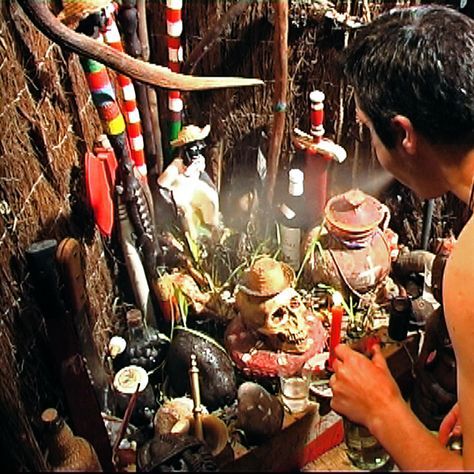

Fifth Palo: also known as Las Reglas de Congo, is an African diasporic religion that developed in Cuba. This is the first practice that hit first before Santeria. It arose through a process of syncretism between the traditional Kongo religion of Central Africa, the Roman Catholic branch of Christianity, and Spiritism.
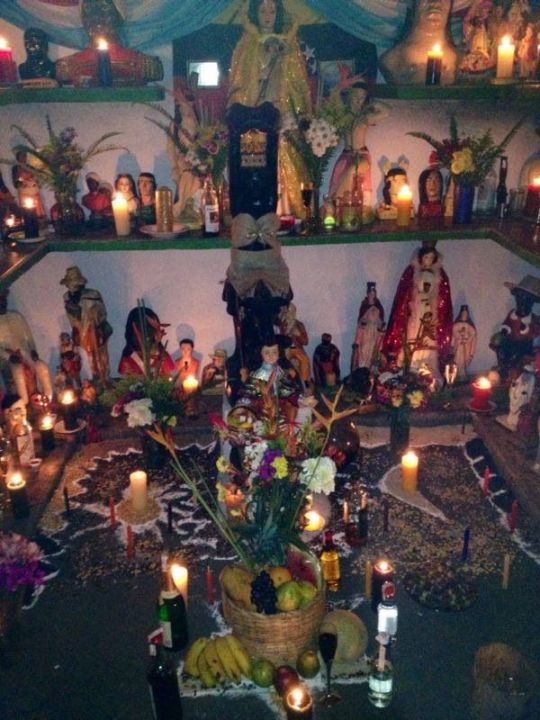
Sixth Espiritismo: Spiritism. Espiritismo (Spiritism) is rooted in the belief system that the spirit world can intervene in the human world and is widely practiced in Puerto Rico it not voodoo but I wanted to add it. At its most basic level, it invokes God and The Positive Spirits to divine for and assist the person. There is the use of a table covered with a white cloth, a large bowl full of water, and a crucifix. There are no initiations into this tradition and people work together at gatherings called Misas.
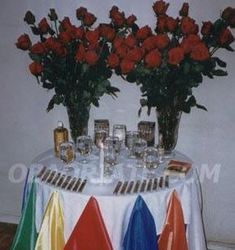
Seventh Sanse: Sanse is a cross between Spiritism and the 21 Divisions. In this tradition, the dead and the Lwa (or Misterios) are worked with spiritually. There is an initiation called a Bautizo (Baptism) and people work withall sorts of different spiritual tableaus, or frameworks.

Eight. Obeah, or Obayi, is a series of African diasporic spell-casting and healing traditions found in the former British colonies of the Caribbean. These traditions derive much from traditional West African practices that have undergone cultural creolization.
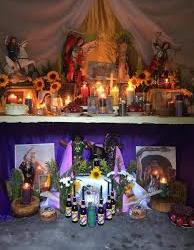
Ninth. Dominican Vudú, known as Las 21 Divisiones (The 21 Divisions), is a heavily Catholicized syncretic shamanistic religion of African-Caribbean origin which developed in the erstwhile Spanish colony of Santo Domingo on the island of Hispaniola. Now 21 Divisiones/Dominican vudu is very similar to the tchatcha/kwakwa/Deka lineage in Haiti. In 21 Divisiones and in the tchatcha lineage of Haitian vodou, is the north part of Hati and the initiations are different and the temples are organized differently.


Tenth. Trinidad Orisha, also known as Shango, is a syncretic religion in Trinidad and Tobago and the Caribbean, originally from West Africa.
I these are some of the voodoo style practices around the world .
#Types of voodoo#African practices#Voodoo#Vodou#Vodun#Spiritual#Voodoo Styles#Different voodoo#Voodoo styles#follow my blog#ask me anything#ask me stuff#like or reblog#like and comment#Spiritual information
43 notes
·
View notes